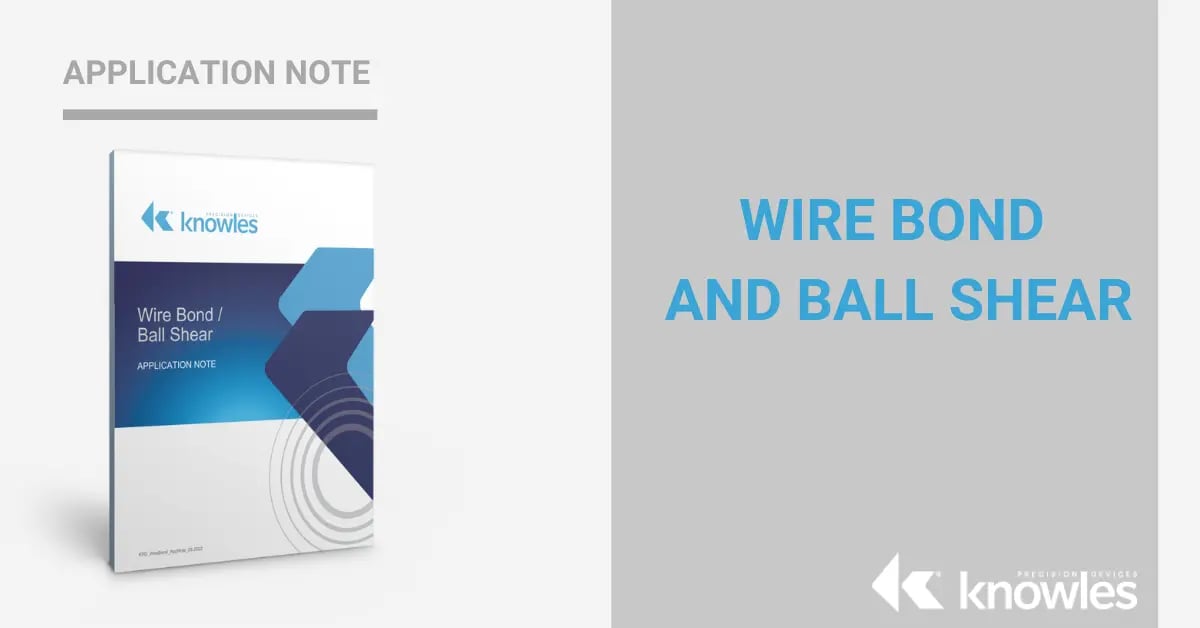Today, one of the most cost-effective and flexible electrical interconnection techniques available is wire bonding. With this technique, thin wire and a combination of heat, pressure, and/or ultrasonic energy are used to create a connection between an integrated circuit or other semiconductor devices and device packaging.

Even though wire bonding is quite common today, the wire bonding process requires a thorough understanding of the metallurgy, thermodynamics, and surface chemistry involved. To ensure our customers have an excellent understanding of wire bonds and the wire bonding process, our experts created this new app note to cover all the details on wire bonding and how to perform the wire bonding process. In this app note, we cover the following:
- The two basic forms of wire bonding
- The criteria to use for wire bond evaluation based on MIL-STD-883
- Typical failure mechanisms for a wire bond as well as related failure mechanisms
- A characterization of the differences between a supplier who uses normal wire bonding quality versus one who uses superior bonding quality
- Inspection, evaluation, and testing techniques for wire bonding
- The steps involved in ball bonding
- Wire bonding tool and wire material information and considerations
- How to perform additional process information for more advanced wire boding applications
With the details available in this app note, you will be well-prepared to create superior-quality wire bonds for products such as our line of single layer capacitors that will not fall victim to one of the common failure mechanisms covered.


